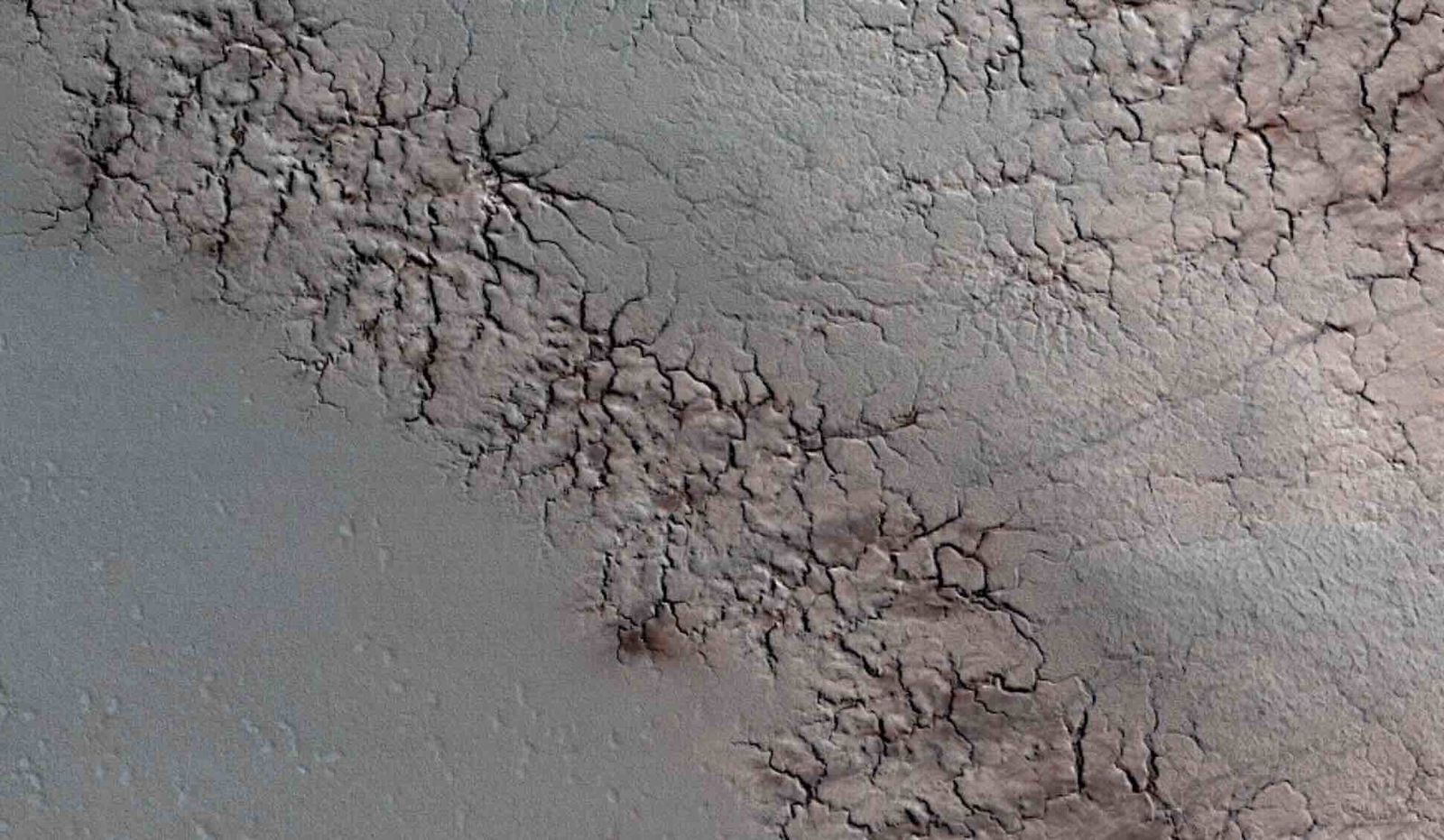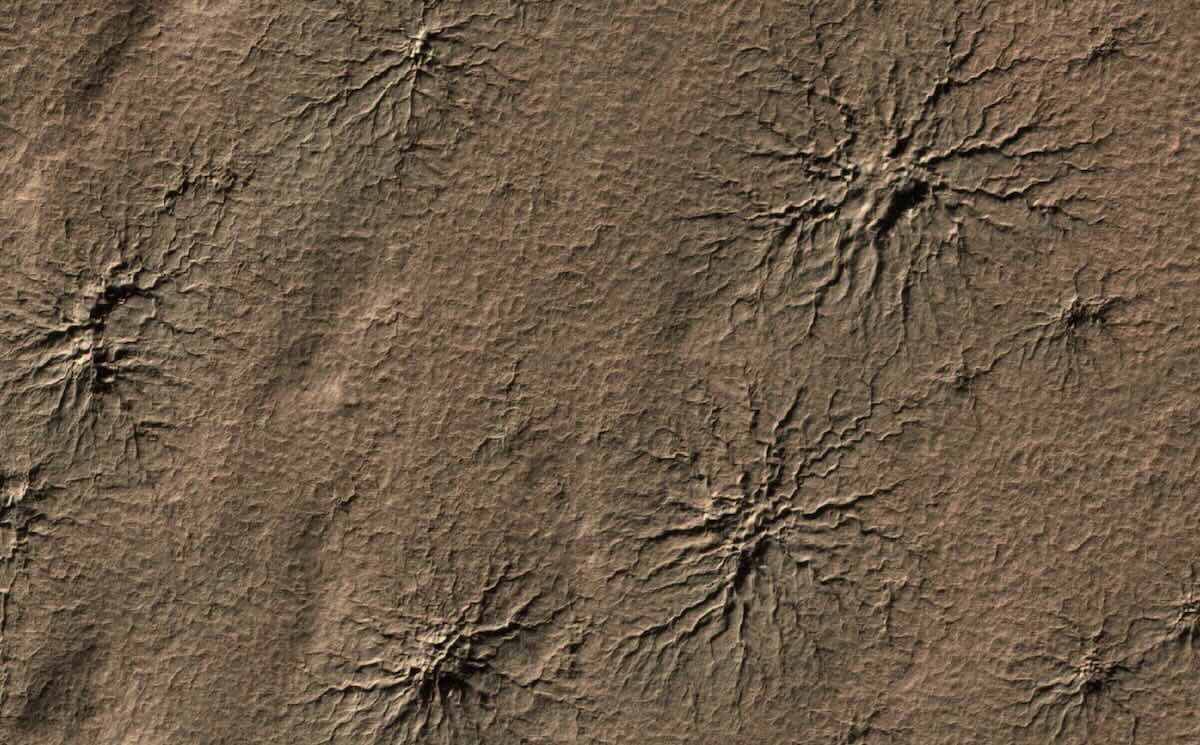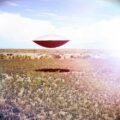Mysterious Martian “spider” formations first observed on the Red Planet more than two decades ago are now being recreated in the lab, providing researchers a deeper understanding of what conditions lead to their formation.
These unusual geologic features, which were initially found along the Red Planet’s southern hemisphere in 2003, have been linked to the presence of carbon dioxide and reveal its role in shaping the appearance of the Red Planet’s unique landscape.
Unraveling the Martian Spider Mystery
In a recent series of experiments, researchers at NASA’s Jet Propulsion Laboratory (JPL) successfully replicated conditions on Mars to help them learn more about these odd, spider-like formations, which are formally known as araneiform terrain.
The odd sprawling features, which can stretch up to a kilometer in length, are now believed to be the product of a combination of exposure to solar radiation through sunlight, along with the presence of carbon dioxide ice and underlying sublimation processes.
The result, based on the new experimental findings at JPL, are intricate Martian “spider” shaped structures that adorn the Red Planet’s southern hemisphere.
Each of the araneiform terrain features can span more than half a mile, producing hundreds of “legs” that stem outward from the central formation. Based on JPL’s recent findings, these odd shapes are probably produced by carbon dioxide ice, which is normally rare on Earth because it does not form naturally here.
Laboratory Simulations Reveal Clues
The researchers at JPL who replicated the processes believed to give rise to the bizarre Martian “spiders” relied on processes outlined in what is known as the Kieffer model, which assumes that light from the sun heats the Martian soil beneath patches of transparent carbon dioxide ice.


As the underlying soil begins to take in heat, the ice begins to warm so quickly that it transitions directly from its solid state into a gas (i.e., sublimation), which leads to the accumulation of pressure beneath the Martian surface.
Eventually, the gas buildup exerts enough pressure to cause the surface terrain to crack, resulting in plumes of sand and dust, and producing the distinctive arachnid-like formations in the regions where the ice melt has occurred.
Making a Martian Spider in a Lab on Earth
The research at JPL was led by Lauren Mc Keown, a planetary geomorphologist whose research interest focuses on araneiforms and their formation. As a Postdoctoral Fellow at JPL, Mc Keown’s past research has investigated how different spider morphologies relate to specific environmental conditions on Mars, both in the past and in the present day.
Mc Keown’s research applies a comparative planetology approach by studying similar “spider-like” features discovered on Jupiter’s moon Europa, and through the application of mapping and morphological analysis techniques to various Martian landforms.
The recent investigations by Mc Keown and the team at JPL relied on the facility’s Dirty Under-vacuum Simulation Testbed for Icy Environments, or DUSTIE, to assist in replicating the conditions that occur naturally on the polar surfaces of Mars, where very low temperatures and air pressure conditions are present.
Producing the correct ice conditions for the experiments was an effort several years in the making and was finally achieved by producing a heat source underneath the simulated Martian soil, which led to cracking in the carbon dioxide. Resulting from this, the team also observed plumes of gas and dust that they say closely resembled the formation processes believed to be associated with the Martian spiders.
Unexpected Discoveries and Lingering Questions
Beyond offering a plausible explanation for the processes behind the creation of these mysterious Martian spider formations, the JPL team’s experiments also revealed a few unexpected findings. Namely, this involved the formation of ice between grains of the Martian soil simulant, which causes it to crack open in ways that are not entirely consistent with the Kieffer model the team relied on for their analysis.
This surprise discovery seems to point to the presence of variations in the Martian soil’s composition, which may be related to how grain size contributes to the formation and appearance of some of the spiders, an observation that is in keeping with the varied appearance of the spiders with relation to their specific locations.
Currently, many questions about Mars’ spiderlike formations remain, including why they appear only in certain regions on the planet’s surface. Based on current observations, it seems most likely that the araneiforms currently seen on Mars probably formed long ago, during periods of the planet’s history when climate conditions were vastly different from today.
Ongoing Research
To date, there are no spacecraft that have been sent to the Red Planet’s southern hemisphere where these unique formations occur, and another possible avenue for future research could involve explorations of this region by future rovers similar to Curiosity and Perseverance.
Going forward, Mc Keown and her JPL colleagues hope to conduct further tests involving simulated sunlight, which they believe could help them better determine how temperature and other environmental changes throughout the Martian year might affect the formation processes of araneiforms.
In the meantime, Mc Keown and her colleagues have published their findings in a new paper, “A Lab-scale Investigation of the Mars Kieffer Model,” which appeared in The Planetary Science Journal on September 11, 2024.
Micah Hanks is the Editor-in-Chief and Co-Founder of The Debrief. He can be reached by email at micah@thedebrief.org. Follow his work at micahhanks.com and on X: @MicahHanks.

